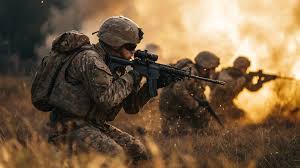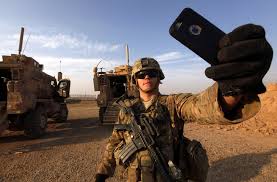List Of Contents
- 1 The Importance of Terrain and Geography
- 1.1 Leadership and Decision-Making in Battle
- 1.2 Adapting to Changing Conditions
- 1.3 The Role of Technology in Modern Battlefields
- 1.4 Psychological Warfare and Morale
- 1.5 Logistics and Supply Chain Management
- 1.6 Cooperation and Joint Operations
- 1.7 The Significance of Timing and Surprise
- 1.8 Lessons from Historical Battles
- 1.9 Training and Preparation for Strategic Excellence
- 1.10 Ethics and Rules of Engagement
- 1.11 Conclusion Battlefield Strategy
- 2 Author
Battlefield strategy is the art and science of directing military forces to achieve objectives under dynamic and often chaotic conditions. It encompasses decisions on positioning, movement, and utilization of resources to gain an upper hand over the opposition. Effective strategies not only hinge on a thorough understanding of terrain, enemy capabilities, and one’s own strengths but also on the ability to adapt to unexpected changes.
The foundation of any strategy lies in achieving the balance between offense and defense. Offense focuses on taking proactive steps to disrupt the enemy, while defense ensures the preservation of one’s assets. Battlefield strategy blends these elements to maintain initiative and adaptability.
The Importance of Terrain and Geography

The physical environment plays a crucial role in shaping battlefield strategies. Hills, rivers, forests, and urban areas all present unique advantages and challenges. Commanders often use terrain to their advantage, employing features like high ground for superior visibility or rivers as natural barriers.
Geography dictates the mobility and placement of forces. For instance, narrow chokepoints can funnel enemy movements, while open plains might favor heavily armored divisions. Mastering the terrain requires reconnaissance and continuous assessment to prevent being caught off-guard.
Leadership and Decision-Making in Battle
Leadership is pivotal in executing a successful battlefield strategy. Commanders must inspire confidence, communicate clearly, and make decisions under pressure. The best leaders understand both the big picture and the minute details of their forces and the Battlefield Strategy.
Effective decision-making involves the OODA loop: Observe, Orient, Decide, and Act. This framework helps leaders assess the situation, consider their options, and take decisive action. Quick and informed decisions can mean the difference between victory and defeat.
Adapting to Changing Conditions
Battlefield Strategy dynamics are fluid, requiring constant adaptation. Plans may fail due to unforeseen enemy maneuvers, weather changes, or equipment malfunctions. Flexibility is essential, as rigid strategies can lead to catastrophic outcomes.
Successful adaptation relies on situational awareness and communication. Leaders must ensure that their forces are well-informed and prepared to adjust tactics on the fly. Contingency planning is another critical aspect, providing alternatives when the primary strategy falters.
The Role of Technology in Modern Battlefields
Technology has transformed battlefield strategy significantly. Advanced surveillance tools, drones, and satellite imagery provide real-time information, enhancing decision-making. Precision weaponry and automated systems have also changed the way forces engage in combat.
However, technology is a double-edged sword. While it offers unparalleled advantages, reliance on it can lead to vulnerabilities, especially if systems are disrupted by cyberattacks or electronic warfare. Integrating technology with traditional strategies is key to maximizing its benefits.
Psychological Warfare and Morale

Psychological factors play a significant role in Battlefield Strategy outcomes. A demoralized force is far less effective than a confident one. Maintaining high morale requires clear communication of goals, provision of adequate supplies, and care for the physical and emotional well-being of troops.
Psychological warfare can also be used to destabilize the enemy. Propaganda, deception, and misinformation are tools that can undermine enemy confidence and cohesion. These tactics, when used ethically, can provide a strategic edge without direct confrontation.
Logistics and Supply Chain Management
A strategy is only as strong as its logistical foundation. Ensuring a steady flow of supplies, ammunition, and reinforcements is critical for sustained operations. Poor logistics can cripple even the most well-planned strategies, leading to resource shortages and operational paralysis.
Effective logistics require foresight and organization. Commanders must anticipate needs and plan supply routes that minimize risks of disruption. Coordination between different units and support systems is also essential to maintain efficiency.
Cooperation and Joint Operations
In modern warfare, collaboration between various branches of the military—army, navy, air force, and cyber units—is common. Joint operations leverage the unique strengths of each branch, creating a synergistic effect that enhances overall effectiveness.
Successful cooperation depends on unified command structures and clear communication. Ensuring that all branches work toward common objectives prevents misunderstandings and duplication of efforts. This integrated approach often leads to a more cohesive and powerful force.
The Significance of Timing and Surprise

Timing is everything in battlefield strategy. Striking at the right moment can catch the enemy off-guard, creating opportunities for decisive victories. Surprise, whether through unexpected maneuvers or unconventional tactics, can disrupt the enemy’s plans and lower their morale.
Achieving timing and surprise requires meticulous indrabet planning and execution. Understanding the enemy’s patterns and anticipating their actions help commanders identify the perfect moment to strike. This element of unpredictability often proves to be a game-changer in combat.
Lessons from Historical Battles
History offers valuable lessons for modern battlefield strategy. Iconic battles such as the Battle of Gettysburg or the D-Day invasion highlight the importance of leadership, planning, and adaptation. These historical case studies provide insights into how strategies have evolved over time.
Analyzing past conflicts allows commanders to avoid repeating mistakes and to emulate successful tactics. It also reinforces the idea that while technology and tactics may change, the fundamental principles of strategy remain constant.
Training and Preparation for Strategic Excellence
Preparation is the backbone of any successful battlefield strategy. Rigorous training ensures that troops are ready to execute complex maneuvers and respond to various scenarios. Simulations and war games provide practical experience without the risks of actual combat.
Preparedness also extends to intelligence gathering and analysis. Understanding the enemy’s strengths, weaknesses, and intentions enables the creation of tailored strategies that exploit their vulnerabilities.
Ethics and Rules of Engagement
Ethical considerations are increasingly important in modern warfare. Adhering to international laws and rules of engagement ensures that strategies are not only effective but also just. This approach fosters respect for human rights and minimizes unnecessary suffering.
Unethical strategies can lead to long-term consequences, including loss of public support and international condemnation. Commanders must balance strategic objectives with moral responsibilities to achieve sustainable victories.
Conclusion Battlefield Strategy
Battlefield strategy is a multifaceted discipline that requires a blend of planning, leadership, adaptability, and ethical considerations. By mastering the core principles and integrating them with modern technologies and tactics, commanders can navigate the complexities of warfare effectively.
Success on the Battlefield Strategy is not solely about defeating the enemy but also about achieving broader objectives with minimal losses. A well-executed strategy ensures that these goals are met while upholding the values and principles that define honorable combat.

